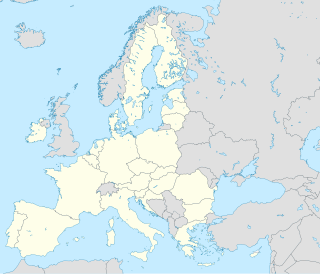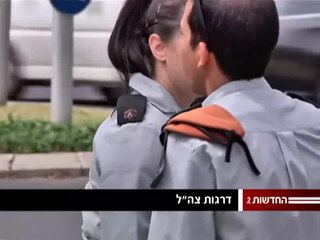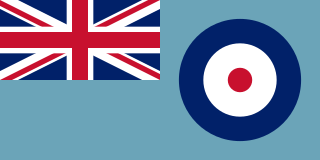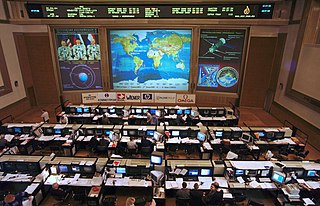 W
WCommand and control (C2) is a "set of organizational and technical attributes and processes ... [that] employs human, physical, and information resources to solve problems and accomplish missions" to achieve the goals of an organization or enterprise, according to a 2015 definition by military scientists Marius Vassiliou, David S. Alberts and Jonathan R. Agre, The term often refers to a military system.
 W
WARKONA (ACCS) – is an Air Command and Control System (ACCS) of the German Air Force.
 W
WThe Baltic air-policing mission is a NATO air defence Quick Reaction Alert (QRA) in order to guard the airspace over the three Baltic states of Estonia, Latvia and Lithuania.
 W
WBlue force tracking is a United States military term for a GPS-enabled capability that provides military commanders and forces with location information about friendly military forces. In NATO military symbology, blue typically denotes friendly forces. The capability provides a common picture of the location of friendly forces and therefore is referred to as the blue force tracker. When all capitalized, the term refers to a specific defense contractors' system, but the capability is found in many military and civilian mobile apps.
 W
WA botnet is a number of Internet-connected devices, each of which is running one or more bots. Botnets can be used to perform Distributed Denial-of-Service (DDoS) attacks, steal data, send spam, and allows the attacker to access the device and its connection. The owner can control the botnet using command and control (C&C) software. The word "botnet" is a portmanteau of the words "robot" and "network". The term is usually used with a negative or malicious connotation.
 W
WThe commanding officer (CO) or sometimes, if the incumbent is a general officer, commanding general (CG), is the officer in command of a military unit. The commanding officer has ultimate authority over the unit, and is usually given wide latitude to run the unit as they see fit, within the bounds of military law. In this respect, commanding officers have significant responsibilities, duties, and powers.
 W
WControl and Reporting Centre is according to the Joint Chiefs of Staff publication 1.02 defined as – A subordinated air control element of the tactical air control centre for which radar control and warning operations are conducted within its area of responsibility.
 W
WA control room or operations room is a room serving as a central space where a large physical facility or physically dispersed service can be monitored and controlled. A control room will often be part of a larger command center.
 W
WA duty officer or officer of the day is a position that is assigned to a worker on a regularly rotational basis. While on duty, duty officers attend to administrative tasks and incidents that require attention regardless of the time of day, in addition to the officer's normal duties. Duty officers are typically assigned to work for a period of time such as 24 to 48 hours, after which he will be relieved by the next duty officer listed on a roster. The outgoing duty officer will turn over relevant data and documentation to the incoming duty officer about the previous day's happenings before returning to his normal duties or resting.
 W
WThis article outlines the command and control (C2) structure of the European Union's (EU) missions, which are deployed as part of the Common Security and Defence Policy (CSDP). This C2 structure ranges from the political strategic level to the tactical level.
 W
WThe fog of war is the uncertainty in situational awareness experienced by participants in military operations. The term seeks to capture the uncertainty regarding one's own capability, adversary capability, and adversary intent during an engagement, operation, or campaign. Military forces try to reduce the fog of war through military intelligence and friendly force tracking systems.
 W
WForce XXI Battle Command Brigade and Below (FBCB2) is a Linux-based communication platform designed for commanders to track friendly and hostile forces on the battlefield. It increases a vehicle commander's situational awareness of the battlefield by gathering information near real-time based on vehicle locations being updated on the battlefield. This information is viewed graphically, and exchanged via both free and fixed text message formats.
 W
WIntelligence Directorate of the Main Staff of the Russian Navy is one of the intelligence services in Russia, created as the Intelligence department of the Soviet navy in 1938, although it has earlier roots.
 W
WThe Israeli Defense Forces (IDF) has a unique rank structure. Because the IDF is an integrated force, ranks are the same in all services The ranks are derived from those used in the pre-state paramilitary Haganah, which operated during the Mandate period in order to protect the Yishuv. This is reflected in the slightly compacted rank structure: for instance, the Chief of Staff is seemingly only equivalent to a lieutenant general in other militaries.
 W
WThe Joint Force Air Component Headquarters (JFACHQ) is the United Kingdom's deployable air command and control unit. The JFACHQ is run by the Royal Air Force with representation from the other services.
 W
WA mission control center is a facility that manages space flights, usually from the point of launch until landing or the end of the mission. It is part of the ground segment of spacecraft operations. A staff of flight controllers and other support personnel monitor all aspects of the mission using telemetry, and send commands to the vehicle using ground stations. Personnel supporting the mission from an MCC can include representatives of the attitude control system, power, propulsion, thermal, attitude dynamics, orbital operations and other subsystem disciplines. The training for these missions usually falls under the responsibility of the flight controllers, typically including extensive rehearsals in the MCC.
 W
WAn officer is a member of an armed forces or uniformed service who holds a position of authority.
 W
WA combat information center (CIC) or action information centre (AIC) is a room in a warship or AWACS aircraft that functions as a tactical center and provides processed information for command and control of the near battlespace or area of operations. Within other military commands, rooms serving similar functions are known as command centers.
 W
WThe People's Commissariat of Defense of the Soviet Union was the highest military department of the Soviet Union from 1934 to 1946.
 W
WThe reorganization plan of the United States Army is a current modernization and reorganization plan of the United States Army that was implemented under the direction of Brigade Modernization Command. This effort formally began in 2006 when General Peter Schoomaker, was given the support to move the Army from its Cold War divisional orientation to a full-spectrum capability with fully manned, equipped and trained brigades; this effort was completed by the end of 2016. It has been the most comprehensive reorganization since World War II and included modular combat brigades, support brigades, and command headquarters, as well as rebalancing the active and reserve components. The plan was first proposed by the Army's 34th Chief of Staff, Eric Shinseki, in 1999, but was bitterly opposed internally by the Army. By 2020, the Army's 40th Chief of Staff was calling for transformational change, rather than incremental change by the Army.
 W
WSignals intelligence (SIGINT) is intelligence-gathering by interception of signals, whether communications between people or from electronic signals not directly used in communication. Signals intelligence is a subset of intelligence collection management. As sensitive information is often encrypted, signals intelligence in turn involves the use of cryptanalysis to decipher the messages. Traffic analysis—the study of who is signaling whom and in what quantity—is also used to integrate information again.
 W
WWing leader, or wing commander (flying), denotes the tactical commander of a Commonwealth military wing on flying operations. The terms refer to a position, not a rank, although the role was usually taken by an officer ranked wing commander. The position was also distinct from the commanding officer of the wing, generally a higher-ranked officer. The first wing leaders were appointed in 1941, and the position remained in use until the 1960s.